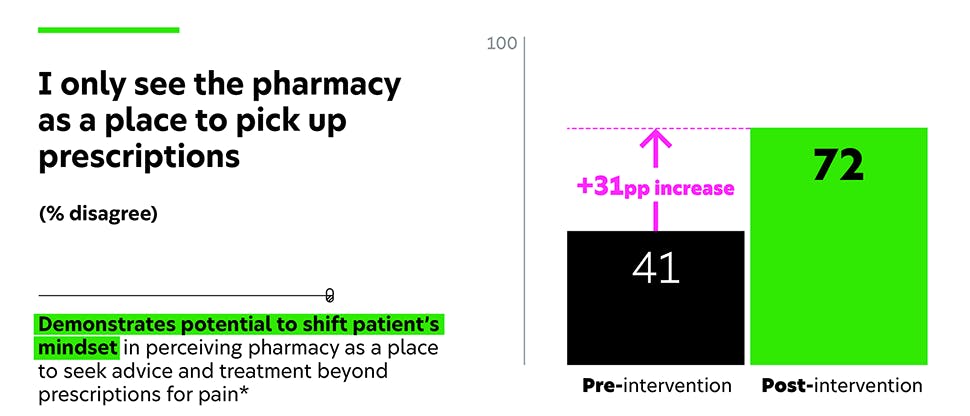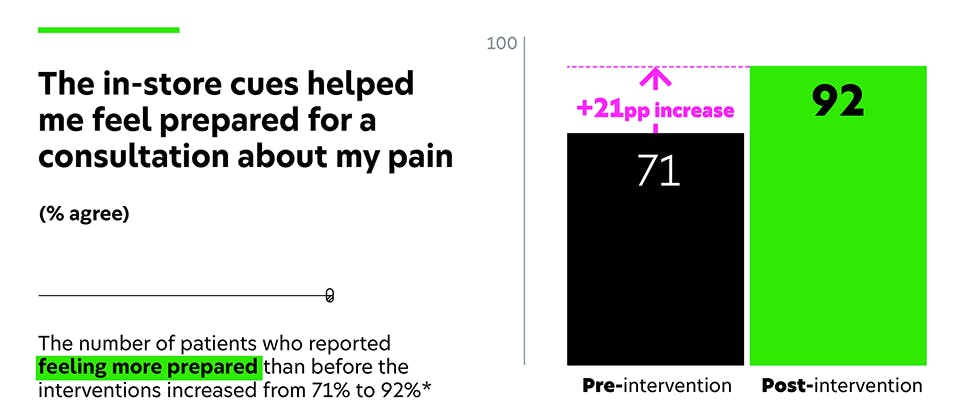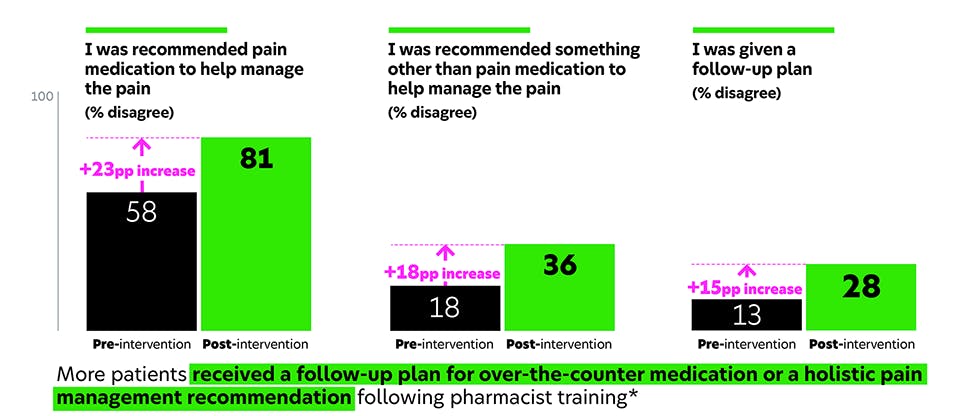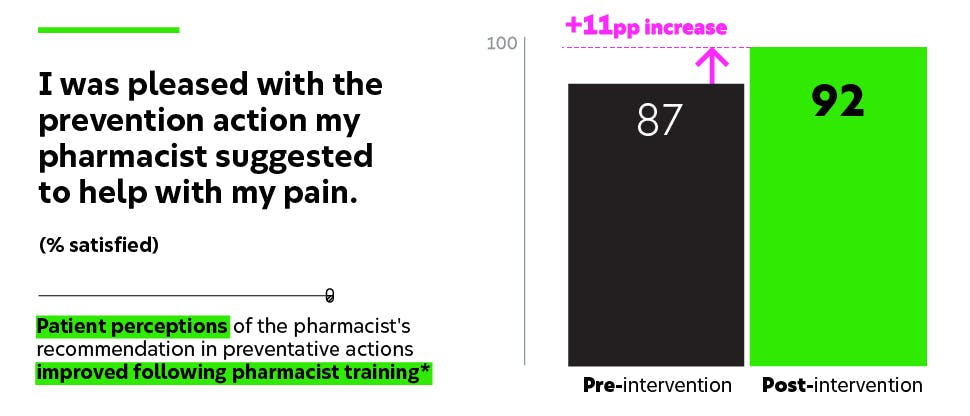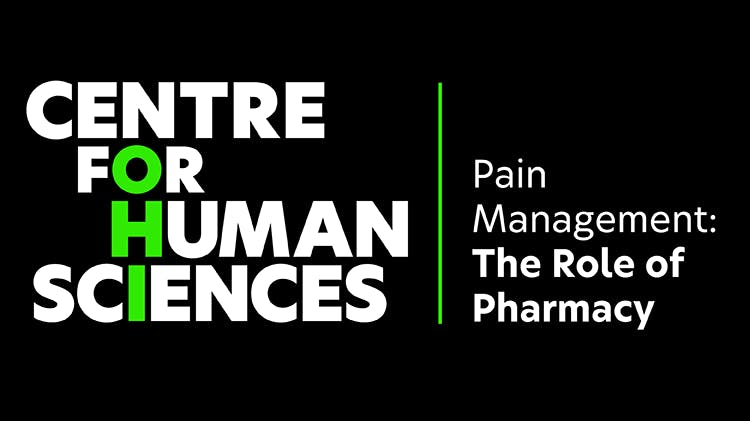Our impact
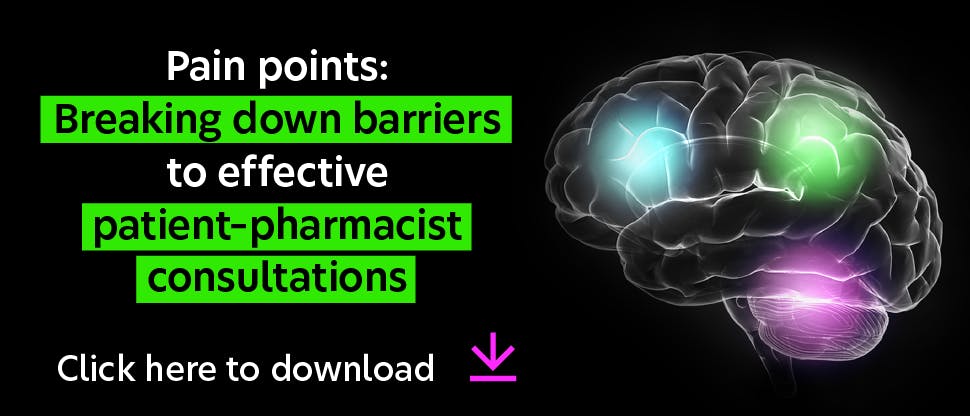
We demonstrated the impact human sciences can have on patient behaviour change in pharmacy
Interventions developed by the Centre for Human Sciences were effective in challenging patient perceptions and changing their behaviour, enhancing consultations about their pain management in community pharmacy.
Our Community Pharmacy Pain Consultations Programme, conducted throughout pharmacies in Australia, evaluated the in-store cues and pharmacist training that were developed with our expert faculty. The results from this pilot demonstrated that even small nudges and additional training, when developed with human sciences in mind, can support better outcomes for patients in pain. You can read the full report of our results and methods in our white paper
Beyond pain management, there may be many areas of pharmacy practice that would benefit from using theories and techniques from behavioural, psychological and social sciences. When looking to more deeply understand patients and influence their heath behaviours, utilising ideas from other disciplines can allow us to have a significant impact on patient outcomes.

Learn more about our interventions
The Community Pharmacy Pain Consultations Programme used pharmacist training and in-store cues - interventions that were developed to deliver on specific behavioural science principles. Access these resources to help reframe patients’ perceptions of the pharmacist’s role and to encourage patients to re-evaluate their pain management.
